Shooting With Spike: How Thomas Newton Sigel Filmed 'Da 5 Bloods'
First and foremost, when you look at any of Spike Lee’s films, you know there’s going to be a strong point of view and you know he’s going to have something to say.
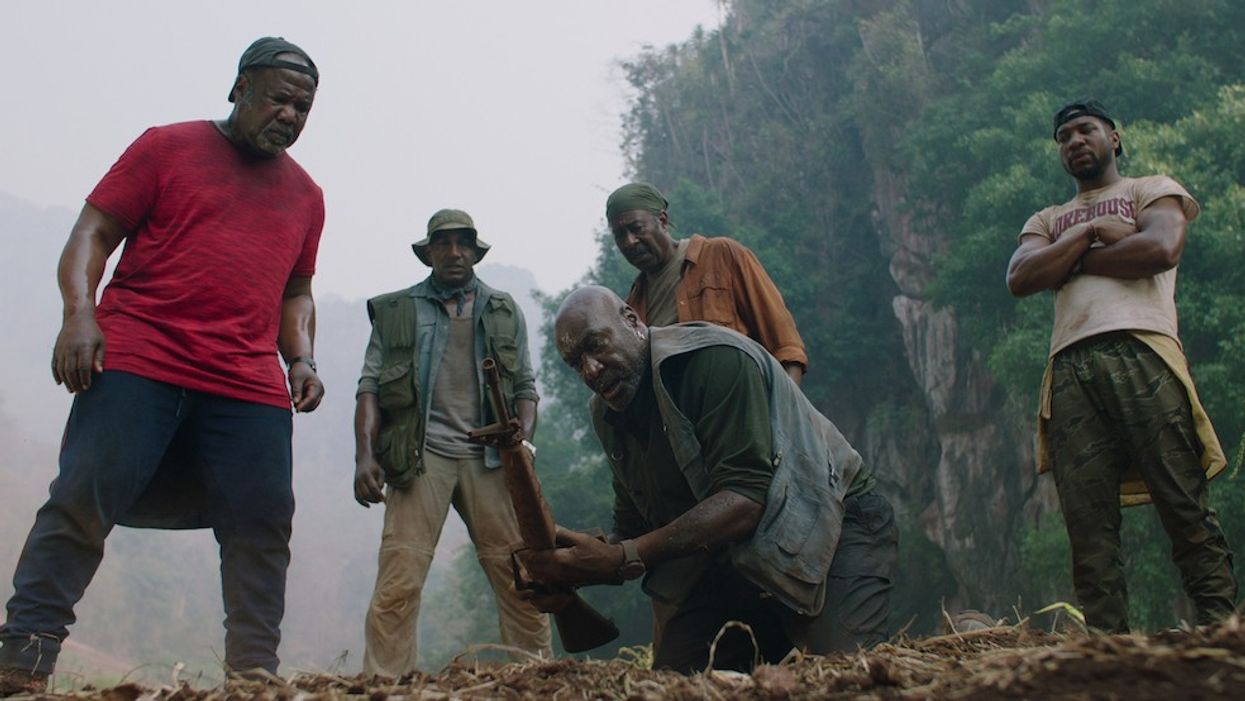
[Editor's Note: No Film School had the privilege of speaking with cinematographer Thomas Newton Sigel about his work on Spike Lee's Da 5 Bloods. The following are Sigel's responses during that interview with NFS's Max Weinstein.]
Spike Lee's new film, Da 5 Bloods, follows 4 Black American war veterans who return to Vietnam to find the buried treasure they hid with their late squad leader during their time in combat. So, for Spike, the film was very much about this group—this band of brothers.
For that reason, Spike really embraced group shots and wide shots. That meant that my coverage would be a little less traditional than your typical wide shot followed by your over. I always try to avoid that sort of coverage anyway, but this film in particular was designed to show as many of the guys in the frame at any given moment as we could, to get across the sense of unity between the “Bloods”—Paul (Delroy Lindo), Otis (Clarke Peters), Eddie (Norm Lewis), and Melvin (Isiah Whitlock Jr.).
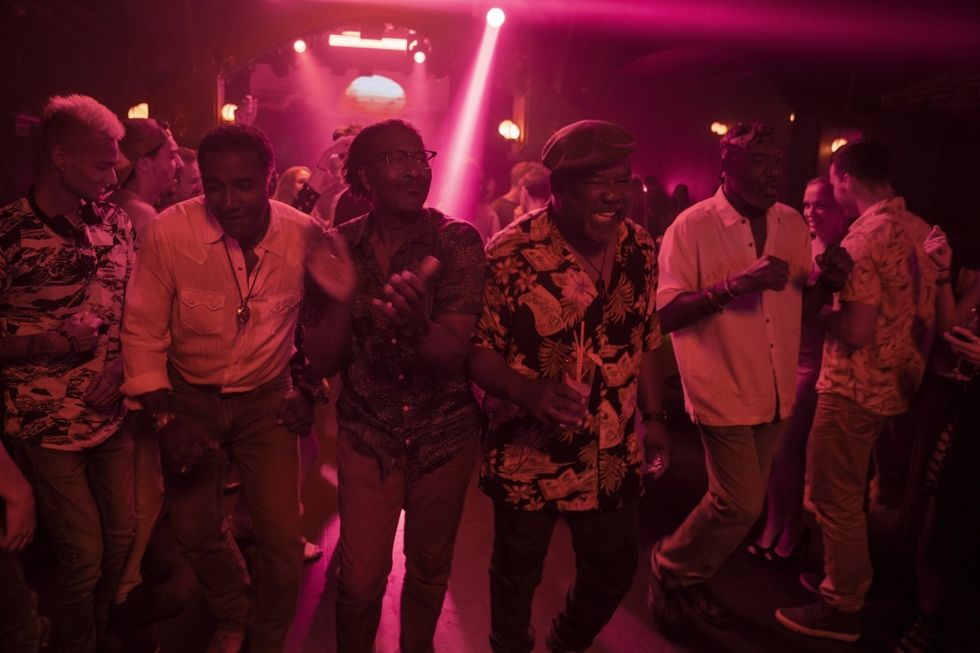
Let Film History Guide Your Story
What Spike has to say also has a lot to do with history and culture, and he often addresses social issues with references to cinema. The guy is a great student of film history. He understands the importance of making the themes of your story clear, and in Da 5 Bloods, one of the ways in which he does this is through his extensive use of archival footage.
We made the decision to shoot the flashback scenes in Da 5 Bloods in 16mm—not merely to let the audience know that they’re watching a flashback, but because that’s how the Vietnam War was photographed. (Shooting on 16mm is also how I first started out, as a photojournalist and documentarian filming in conflict zones.) We even went so far as to shoot on reversal stock, which is what a lot of the news camerapeople used at that time. Mixing film stocks made for a perfect blend between our flashbacks and the archival footage we ultimately used.
Be Ready to Improvise on the Fly
This approach had its challenges, though—especially when we had to shoot a flashback scene involving a helicopter crash. For safety reasons, we weren't permitted to take the actors up in the air with us to shoot from inside the helicopter. Frankly, even if we could, shooting the kind of dialogue scene we needed to shoot would've been nearly impossible with actors 20 feet up in the air bouncing around as the camera flew around on cranes.
In our case, the only way to do a scene like that was to record both the performances and the dialogue safely. So, the interior portion of the helicopter had to be shot on a gimbal, which meant that it would be done with blue screen using a mock-up of the helicopter. We needed to make the scene look real and to get it to match the other material, and that presented some technical setbacks… but that’s something you deal with all the time during production.
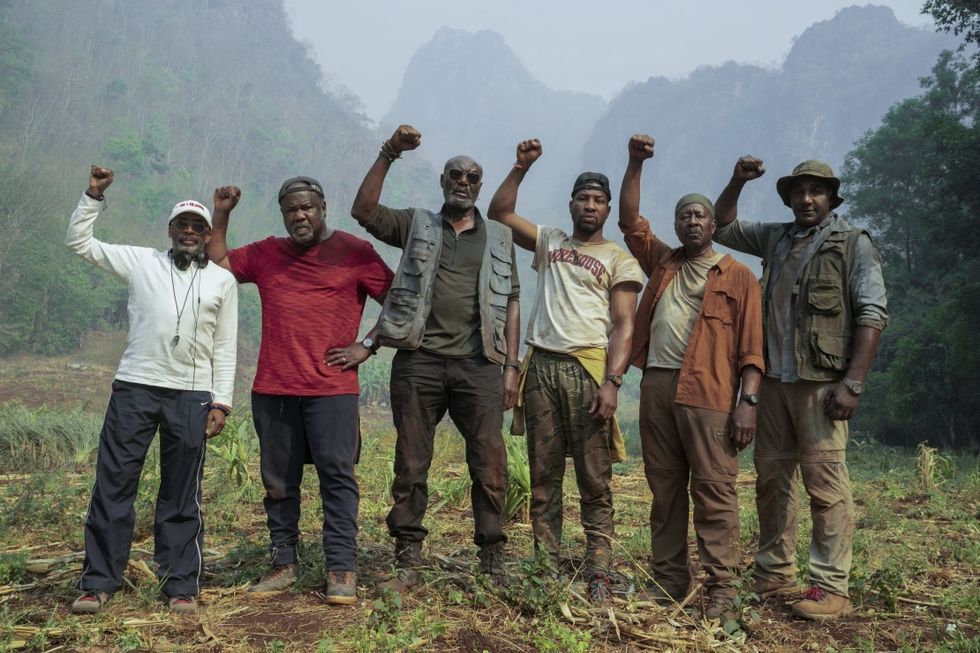
Get Out of the Actors’ Way
To further define what makes a Spike Lee film a Spike Lee film: There are aspects of his choreography, tools of the trade, and certain signatures that he’s going to pull out at some point. Of course, there’s almost always a dolly shot toward the end of his films. And there’s his use of direct address to the camera—which, in Da 5 Bloods, is at its most powerful during Delroy’s soliloquy.
When you’re shooting a scene like that, both the actors and the crew feel the pressure in very different ways. Delroy understood that it would be one of the key scenes of the entire film, so there was a tremendous amount of pressure on him to not only deliver the emotional truth of the moment but to really make it shine. Once the actor hits it, the pressure from the point of view of the crew is to not have that gem of a performance be unusable for some stupid technical reason—losing focus, bumping the camera, the light not working, or whatever else.
The worst thing in the world is when an actor is pouring his heart out and you say, "Oh, oh—excuse me, cut, cut! We had this little problem…” That’s something that no actor—or director—wants to hear. Typically, when you film a take and say, “You know what, can I get one more?” that’s when the director tells you that an actor just got their best performance.
Delroy’s soliloquy wasn’t a super-hard technical shot. It was a Steadicam shot, so we needed to make sure that our path was clear, but the move itself was pretty straightforward. Our focus puller, a fellow named Peter Byrne, had the most critical, puckering job for that shot and could have easily blown it and ruined a great take, but he was absolutely terrific. We did quite a few takes—more than anything, to let Delroy and Spike discover everything they could about that soliloquy. Delroy embellished certain things—like when his character raises his fist in the air—to take what was already a great piece of writing to another level.
Flashback Scenes are Living Memories
The decision to not de-age the actors for their flashback scenes was in the script from the first time I read it, and it was clearly something Spike wanted to do right up front. I thought it was one of the most unique and ingenious ideas and it was one of the things that made me most exciting about making Da 5 Bloods.
I found it fascinating because at the time I got the script, I had already been reading a lot about the research that’s gone into how memory works. I learned that researchers came to realize that memories are recreated every time you think about something. When you have an experience—say, a car accident—and then you tell somebody about it a year later, you're picking up pieces of that memory that were stored in different parts of your brain and putting them back together. Any time you do that, you're creating a new memory. That’s one of the reasons why memories change over the years, and why they're not always 100% reliable.
Spike’s decision not to de-age the characters reinforced the idea that these guys going back to Vietnam was an experience of reliving what happened to them. And, as much as that was a part of his approach to storytelling, he also made it clear that he did not particularly care for the examples of de-aging, prosthetics, or casting young actors for flashbacks that he had seen. After looking at a whole set of pros and cons, he felt that it was better to just have Delroy, Clarke, Norm, and Isiah do the flashback scenes themselves.
This created certain logistical problems. (No man moves at the age of 60 like he did when he was 20, or Michael Jordan would still be in the NBA.) So, we had to be judicious about how we shot them—not just to hide the fact that they couldn't run like gazelles, but also to not make it look so comical that it would take the audience out of the movie. For the most part, the actors really did what you see on-screen… but on the occasion that something they had to do was physically demanding, we would use a double.
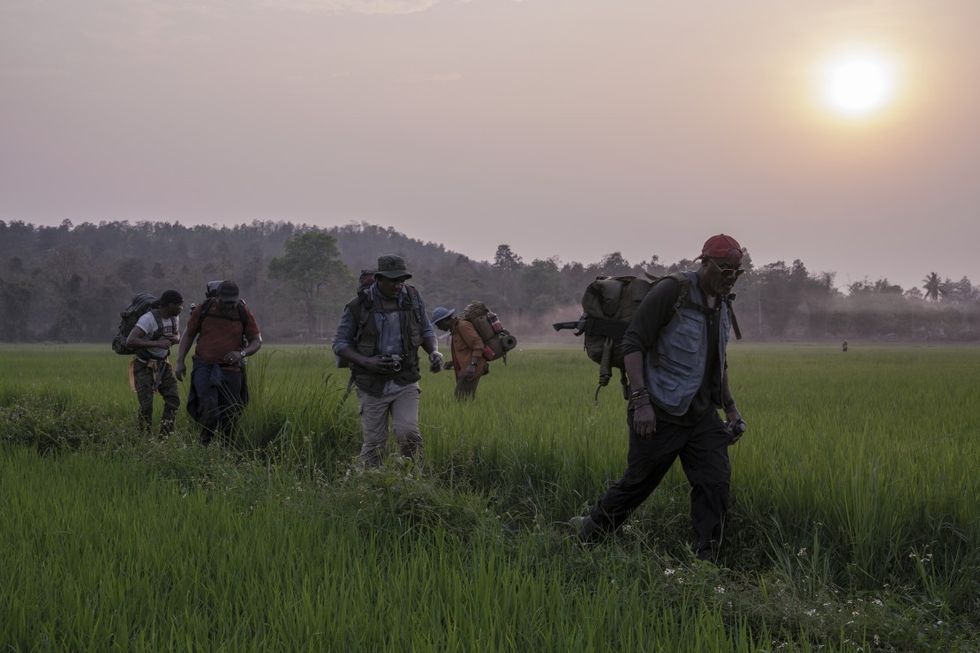
Don’t Box Yourself in With One Aspect Ratio
We made alterations to the film’s aspect ratio to create a sense of transition from Ho Chi Minh City to the Vietnamese jungle.
When the Bloods first arrive in Ho Chi Minh City and discover that it’s a modern, bustling version of its former self, we shot those scenes with the Alexa LF medium format camera, modern Angénieux lenses, and a 2.40:1 aspect ratio. The Bloods’ trip into the jungle is their travel back in time to their roots, and that’s when we opened up the aspect ratio to 1.85:1.
Now, when I say “opened up,” that’s a little bit counterintuitive. We’re so used to the theatrical experience, where a 2.40:1 or 2.39:1 aspect ratio in the theater is widened out and the edges of the frame on the letterbox open up to give you a wider format. But in the world of Netflix, you have a different architecture that you’re working with.
Whether you’re watching something on a computer, an iPad, or an 85-inch television screen or home projector, you’re watching it within a 16:9 or 1.78:1 aspect ratio, and how it’s letterboxed within that varies from show to show and artist to artist. What that meant for us is that we’d have the opportunity to go from a 2.40:1 widescreen unit to “open it up”—so that the letterbox at the top and the bottom disappear and the jungle becomes bigger and more immersive, more all-encompassing. That was our way of putting our characters back in the headspace they were in during those formative years they spent in Vietnam.
One thing I would say to new filmmakers is this: There's no restriction to what aspect ratio you use or how you use it. Whether you shoot on film or digitally, film finishes are now virtually nonexistent. Whatever you think tells your story best is fair game.
Experience is the Best Teacher
Working with different directors is a bit like dating or having different lovers. You need to get inside their head, figure out what it is that makes them tick, and see what you can glean from their worldview so you can complement that as best as you can.
Having worked on commercials with Spike before we made Da 5 Bloods, I knew that he likes to be prepared and shoot very quickly. He's decisive and there's not a lot of conversation about, "Should we do that? Or that?” I didn't know how that would translate to making a feature together, and I was quite fascinated by the fact that the experience making Da 5 Bloods was no different. This was such an important film for Spike—and yet, we started every day very early, and the faster we could get a shot off, the happier he would be. The on-set methodology we honed while shooting those commercials ended up being a great experience for this shoot.
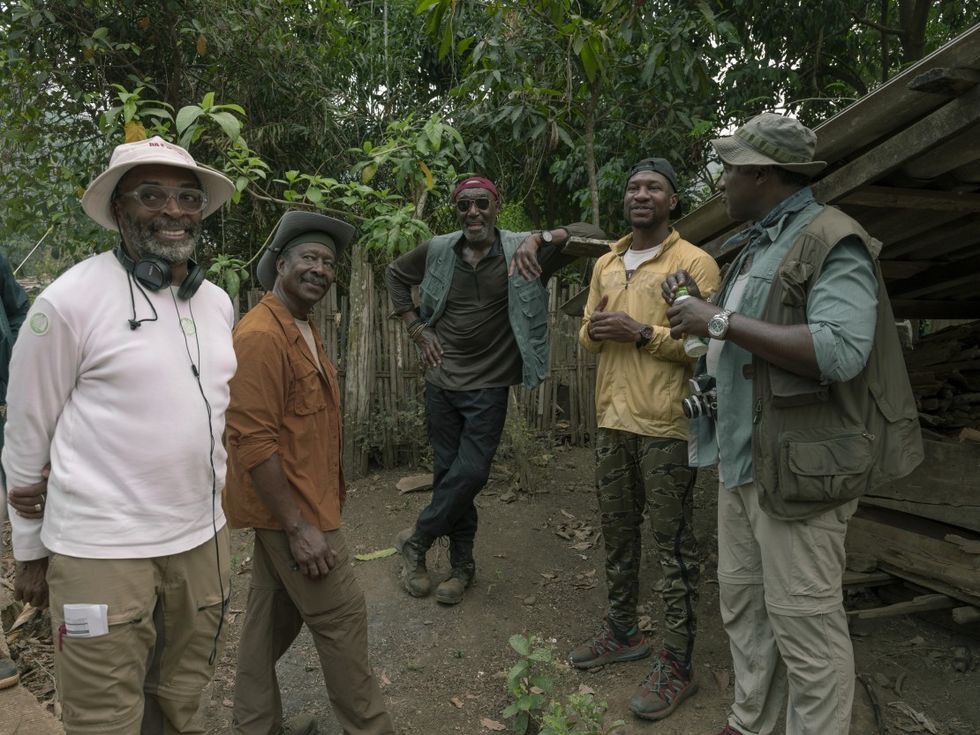
My days doing Second Unit with Oliver Stone on Platoon were also, in some way, a part of my own personal film school. But you’re always an accumulation of your own personal history, and mine began long before Platoon. In fact, the reason I got hired on Platoon was because I had experience shooting documentaries in El Salvador, Nicaragua, Guatemala, all over Central America. Da 5 Bloods is a very different movie than Platoon, but in both cases, my approach to shooting war films goes back to my documentary days.
Shooting documentaries was a lot of trial and error.
I once filmed an interview with President Duarte of El Salvador and tried to break the ice by making small talk, telling him about the wonders of gaffers' tape as I taped a light to the wall. I walked away, then heard the light crash to the floor behind me and all of his bodyguards whipped out their guns. I realized I had used gaffers' tape on a wall that was covered with sand paint—a kind of textured paint that gaffers' tape naturally pulls off the wall. You live and learn, right? Sometimes the failures are as instructive as the successes.
It only makes you a more complete artist to take as much as possible from each of your collaborators… and not just directors. If you’re a cinematographer, steal the knowledge of your gaffer, your grip, or whoever else—and share yours, too.











